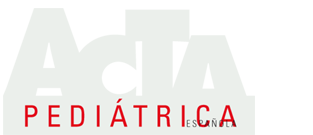Resumen
Objetivo: Estudiar las características epidemiológicas y clínicas de la migraña y la cefalea tensional en la edad pediátrica y analizar la validez de los criterios utilizados en el diagnóstico de la migraña.
Pacientes y métodos: Se han revisado 300 historias de pacientes con cefaleas agudas recurrentes, recogiéndose datos epidemiológicos y clínicos y, en su caso, exámenes complementarios. Los criterios diagnósticos aplicados fueron los de la International Headache Society (IHS). Se han calculado la sensibilidad, la especificidad y el cociente de verosimilitud de los criterios de Vahlquist, Prensky y de la IHS para la migraña.
Resultados: El 98,3% de los casos eran cefaleas primarias: migraña (50%) o cefalea tensional (48,3%). El 32,7% de las migrañas tenían aura. La edad de inicio de la migraña era de 8,7 años, y de la cefalea tensional 9,7 años (p <0,05), sin diferencias entre sexos. No obstante, en la migraña con aura la edad de comienza (9,8 años) y la prevalencia del sexo femenino (63,3%) eran significativamente mayores (p <0,05). En la cefalea tensional había una mayor prevalencia (p <0,05) de sexo femenino, procedencia urbana y rendimiento escolar excelente; y en la migraña había mayor prevalencia (p <0,05) de antecedentes familiares. En la migraña el dolor era unilateral (44,4%) o bilateral (55,9%), pulsátil (87,5%), empeoraba con el ejercicio (68,8%), interrumpía la actividad diaria (65,3%), y se acompañaba de vómitos (71%) y fotofobia/sonofobia (67%). En la cefalea tensional era bilateral (81,8%), opresivo (85,3%), apenas empeoraba con el ejercicio (22,3%) o interrumpía la actividad diaria (12,1%) y, ocasionalmente, se acompañaba de vómitos (7,3%) o fotofobia/sonofobia (18,9%). El carácter pulsátil, los vómitos, la unilateralidad y la intensidad moderada-severa eran los ítems de mayor capacidad discriminatoria; los criterios de la IHS eran los de mayor validez diagnóstica. Los exámenes complementarios no modificaron el diagnóstico.
Conclusiones: La migraña y la cefalea tensional son las causas más frecuentes de cefaleas agudas recurrentes en la edad pediátrica, de inicio preferentemente en la edad escolar. Aunque los criterios de la IHS permiten su diagnóstico diferencial, el control evolutivo sería la prueba de referencia para validar los criterios diagnósticos.
Abstract
Objective: To study the epidemiological and clinical characteristics of migraine and tension-type headache in paediatrics, and to analyze the validity of criteria used to diagnose migraine.
Patients and methods: Information on epidemiological and clinical characteristics, physical examination and complementary examinations, when performed, were collected from medical records of 300 children with acute recurrent headache. The criteria defined by the International Headache Society (IHS) were used in the diagnostic. The sensitivity, specificity and likelihood ratio of the Vahlquist, Prensky and IHS criteria for migraine were all calculated.
Results: A total of 98.3% of the patients had primary headache: migraine (50%) and tensional-type headache (48.3%). Thirty two percent of those with migraine had migraine with aura. The mean age at onset was 8.7 years in migraine and 9.7 years in tensional-type headache (p <0.05), with no differences between sexes. Nevertheless, in migraine aura the age of onset (9.8 years) and prevalence of females (63.3%) were significantly higher (p <0.05). Children with tensional-type headache showed a higher prevalence (p <0.05) of female sex, urban origin and excellent academic performance. Children with migraine had a higher prevalence (p <0.05) of positive family history. In migraine, the pain was unilateral (44.4%) or bilateral (55.9%), pulsatile (87.5%), aggravated by physical activity (68.8%), caused lost days at school (65.3%) and were usually accompanied by vomiting (71%) and photophobia/phonophobia (67%). In the tension-type headaches were bilateral (81.8%) and oppressive (85.3%), they were less frequently aggravated by physical activity (22.3%) or inhibited activities (12.1%) and occasionally accompanied by vomiting (7.3%) and photophobia/phonophobia (18.9%). The pulsating quality, vomiting, one-sidedness and moderate to severe intensity were the items that displayed the greatest discriminating capacity and the IHS criteria were those with the highest diagnostic validity. Diagnosis was not altered by the complementary examinations.
Conclusions: Migraine and tension-type headache are a common cause of recurrent headache in paediatric age. Onset usually occurs in school-age children. The IHS criteria for the differential diagnosis of headache in children are useful, although monitoring its progress would be the gold standard to validate diagnostic criteria.














